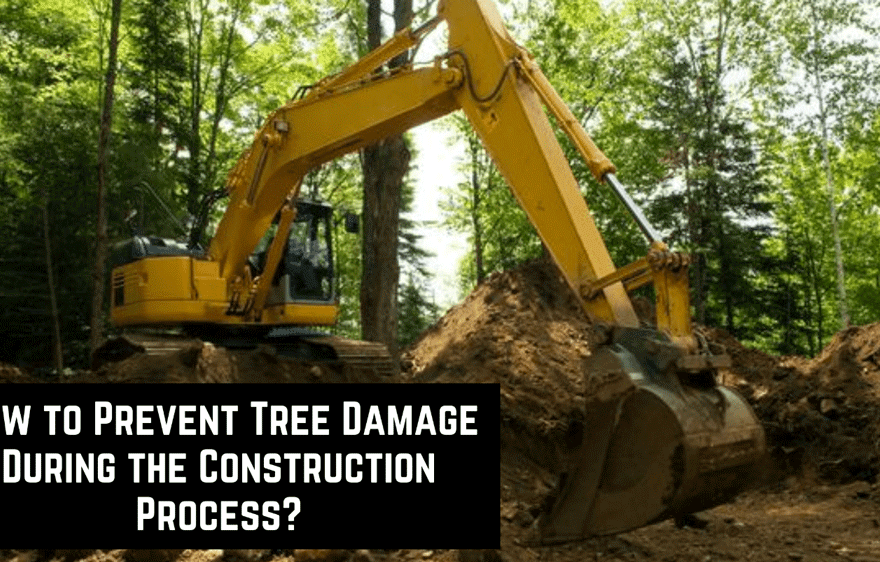Trees are integral pieces of your landscape that increase property value. They add shade and variety to your yard, increase energy efficiency, and attract other beautiful wildlife. Trees are sensitive to major changes to their environment, however, and can suffer damage during home renovations or construction.
It can also be difficult to tell when or how they sustained harm as they may not show any indication of damage for several months or even years. Careful planning, preventative care, and coordinating between a certified tree care specialist and your builder can mitigate these effects and save you treatment and removal fees later on.
Damage Trees May Sustain During Construction
You can prevent the damaged tree by offering care and good services. Here are a few of the way’s trees can be harmed during construction projects:
- Large construction equipment can injure or split limbs and branches, tear bark, and damage tree trunks.
- If building a house or other large structure, the digging and trenching needed for constructing the foundation can destroy root systems. This unseen damage may eventually cause trees to lean or fall, and the severing of just one major root can result in a loss of 5-20% of a tree’s root system.
- The uppermost 6 to 12 inches of soil contain 90% of the thinner, tenuous roots of a tree. These shallow roots are responsible for supplying life-giving water and minerals to the tree. If extra dirt is piled on top of these thinner roots, the increasing soil grade can smother them.
- Root-containing soil can be compacted by heavy equipment, reducing oxygen distribution to the rest of the tree.
How to Mitigate Damage?
Planning will save you a lot of time and money in reparative work after your renovations are complete. Consulting a certified tree specialist will greatly help you during the preparation process.
They will work with your builder to develop a landscape protection plan before construction begins. Here are some steps to help mitigate damage to your trees during construction:
- Set up construction fences around the perimeter of all the trees you want to protect. Fences should be positioned as far from the trees as possible to prevent damage to the root systems. The general spacing rule is to leave one foot of space from the tree for each inch of trunk diameter.
- Instruct the construction team to keep the fenced area free from building materials, waste, or excess soil. Also, avoid trenching inside the fenced areas.
- Cut the long branches by calling tree lopping professionals who offer top-notch quality tree trimming and pruning services.
- Inventory the trees on-site, and be clear about which trees you intend to save.
- Prepare the trees for construction disturbance by making sure they are as healthy as possible before your renovation begins. Water them regularly, test soil, and fertilize if necessary.
- Monitor the construction process to ensure that perimeters are being maintained. If you note visible damage, start repairs as soon as possible.
Maintenance after Construction
After construction has been completed, your trees will most likely experience a transition and recovery period of up to several years to adjust to their environmental changes. Trees that have undergone construction are more susceptible to health problems such as disease or insect infestation.
Carefully monitor your trees and keep written records to help you recognize less visible indications of tree stress. It is imperative to determine the signs of tree stress so that you can take some immediate measures to protect your trees. Here are some signs to watch for that may indicate construction damage:
- Wilted or scorched leaves, drooping branches, and premature leaf drop
- Flowering out of season
- Sparse leaf cover
- Excessive water sprout formation on the trunk or abnormally heavy amounts of seeds. These defense mechanisms are intended to ensure species survival, and they indicate that the plant has experienced extreme stress.
Hire Certified Arborist
Trees are beautiful, beneficial components of any property that must be carefully protected. This is especially true during major home renovations, and construction as trees are sensitive to major environmental changes.
To avoid causing serious damage and stress to your trees, precautions must be taken. Planning and providing consistent maintenance and consulting, a certified arborist will make sure that your trees remain unharmed and healthy for years to come.
A professional tree service will assess and monitor your trees as well as create a protection plan to adhere to throughout the construction process. The certified arborist uses the right tools and equipment to offer top-notch tree services.
Also, they have the right knowledge and good skills to overcome the challenges. The certified arborist undergoes training, and they have good experience in the relevant field.
